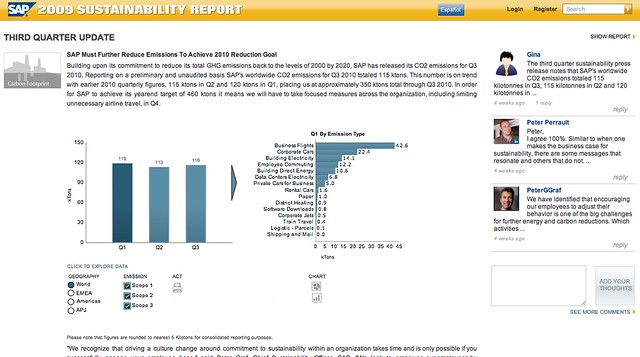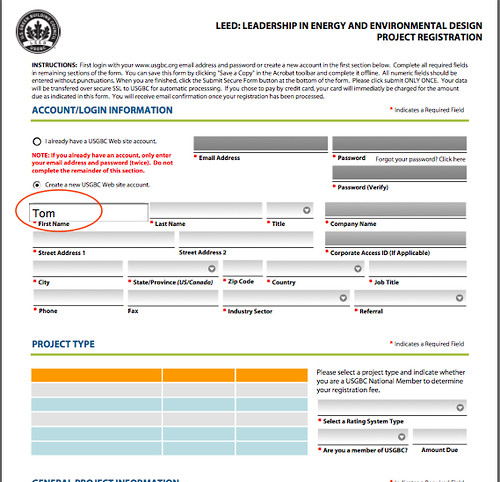I have posted here in the past on just how way ahead of the pack SAP’s 2009 Sustainability Report is, however having gone through it in detail when it came out, I didn’t revisit it much until the other day.
Why did I go back to visit the Sustainability Report again recently? Because I was on a call with SAP’s Chief Sustainability Officer, Peter Graf who was telling me about the updates to the report.
“Updates to a Sustainability Report?” I hear you say – yes, SAP are publishing quarterly updates on their Sustainability Report site – one of the advantages of having their report on a website, as opposed to a PDF, is the ability to update it regularly (another advantage is to be able to use website analytics software to see what aspects of the report are generating the most interest).
Anyway, I digress! While chatting to Peter on the call I realised that SAP have been populating the the updates, not just with data but also with SAP Sustainability news stories, many of which I had missed during the year! In case you have too – here’s a quick rundown of them:
- SAP was named as the highest ranking software company in the 2010 Dow Jones Sustainability Index – this is the fourth consecutive year SAP has been in the number one spot here.
- SAP Americas headquarters achieved a LEED Platinum certification – this is the highest rating given by the US Green Building Council (USGBC) for low impact buildings
- SAP released version 5.0 of its Carbon Impact OnDemand software. The latest version includes language support for more than 50 countries, automated data collection and strategies for energy and emissions reduction
- The Carbon Disclosure Project announced a new service – the CDP Reporter Service. This consists of an emissions reporting tool (a light version of SAP Carbon Impact OnDemand) to collate and prepare emissions data for disclosure and verification as well as an enhanced analytics tool (based on SAP software) “to maximise the value of CDP?s global climate change data set for benchmarking purposes.
- SAP has published a version of their Sustainability Report in Spanish. According to Peter, Spanish was the foreign language most in demand by SAP’s customers and more languages are coming soon.
and finally
Some great news there – and another good reason to keep checking back on the SAP Sustainability Report!
Photo credits Tom Raftery





